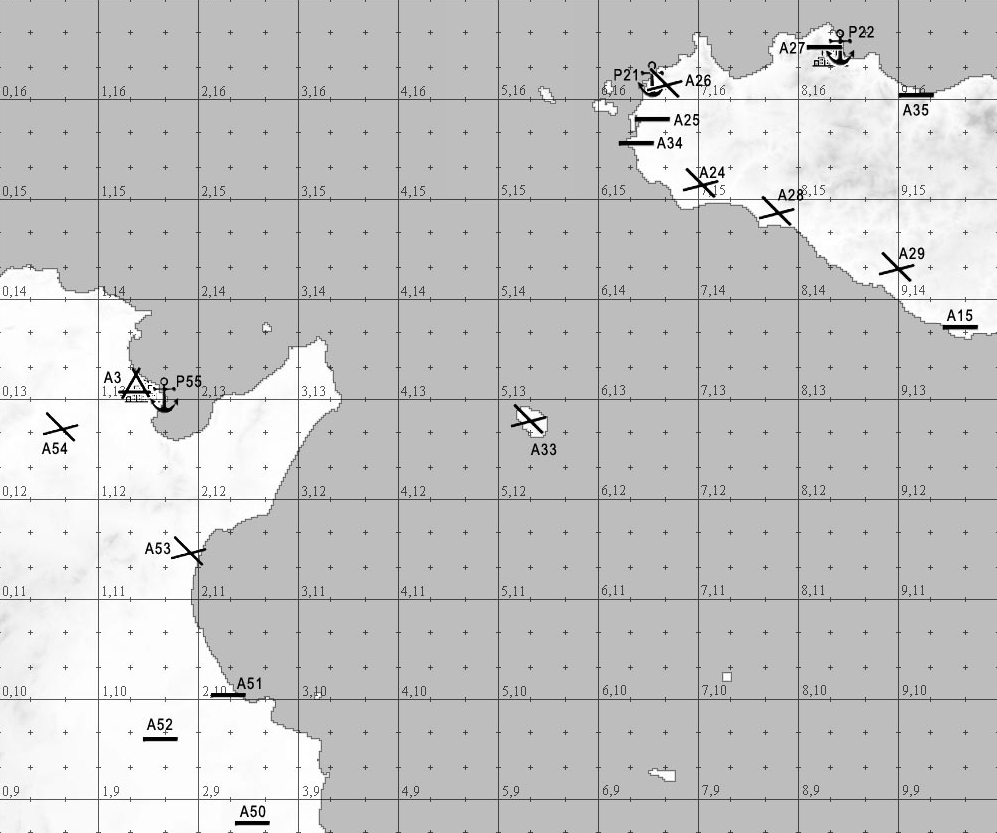Pantelleria 1943

Introduction
Operation Corkscrew was the code name for the Allied invasion of the Italian island of Pantelleria (between Sicily and Tunisia) on 11 June 1943, prior to the Allied invasion of Sicily during the Second World War. There had been an early plan to occupy the island in late 1940 (Operation Workshop),[but this was aborted when the Luftwaffe strengthened the Axis air threat in the region.
The Allied focus returned to Pantelleria in early 1943. The radar installations and airfield on the island were seen as a real threat to the planned invasion of Sicily (codenamed Operation Husky). The Italian garrison on the island was 12,000 strong in well-entrenched pillboxes and 21 gun batteries of a variety of calibers. In addition, there was an opportunity to assess the impact of bombardment upon heavily fortified defenses. It was decided to see if the island could be forced into submission by aerial and naval bombardment alone. Failing this, an amphibious invasion was planned for 11 June.
Starting in late May, the island was subjected to steadily increasing bombing attacks. In early June, the attacks intensified and 14,203 bombs amounting to 4,119 tons were dropped on 16 Italian batteries. On 8 June, a Royal Navy task force of five cruisers, eight destroyers and three torpedo boats carried out a bombardment of the main port on the island.
The engagement was observed by General Dwight D. Eisenhower, the Supreme Allied Commander in the Mediterranean, and Admiral Andrew Cunningham from the flagship HMS Aurora. From 8 May to 11 June 5,285 bombing sorties were flown by fighter-bombers, medium and heavy bombers, dropping a total of 6,202 tons of bombs on the island.
Two demands for the garrison to surrender went unanswered and, on 11 June, the amphibious assault went ahead. About an hour before the landing craft reached the beaches, the accompanying ships opened fire. Unknown to the attackers, the commander of the garrison on Pantelleria had sought permission to surrender from Rome the previous evening and received it that morning.[3] When the first of the British Commandos landed, the Italians surrendered. The British Prime Minister, Winston Churchill, was to record later in his memoirs that the only British casualty of the operation was a man bitten by a mule.
An assessment by British analyst Professor Sir Solly Zuckerman reported that the defenses had been reduced to 47 percent effectiveness. The intense ten-day air bombardment had substantially reduced the defenses. Out of 80 guns bombed, 43 were damaged (10 beyond repair). All control communications were destroyed, along with many gun emplacements, ammunition stores, and air-raid shelters. The ease of the operation led to an optimistic assessment of the effectiveness of bombing, which was not always borne out in practice.
The Italian garrisons on other nearby islands (Lampedusa and Linosa) quickly fell. This cleared the way for the invasion of Sicily a month later.
Please join the FSO Team for this mid-years war special event featuring the USAAF vs the Luftwaffe in Pantelleria 1943.
Side Split
Axis 50%
Allies 50%
Plane-set
|
Axis |
Allies |
||
|
Aircraft |
Min - Max |
Aircraft |
Min - Max |
| 1st Hour | |||
|
BF109G-6 |
|
P-38G |
Max 12 |
|
FW190A-5 |
|
Spitfire IX |
Max 6 |
|
|
|
|
|
|
|
|
|
|
| 2nd Hour |
|||
| BF-109F-4 | Unlimited | Spitfire V | Unlimited |
| He111H | Unlimited | B-25C | Unlimited |
| C202 | Unlimited | P-40F | Unlimited |
Ordnance Distribution
Axis
JU88A-4 - [4x] 250 kg bombs or [2x] F5B Torpedoes
He111H - [4x] 250 kg bombs or [2x] F5B Torpedoes
Allies
B-26B - [8x] 500 lbs bombs
B-25C - [6x] 500 lbs bombs
Terrain

Special Event Rules and Ordnance Restrictions
- This is a multi-life event.
- Ordnance for each aircraft will be set by the setup CM in the hangar.
- Aircraft may rearm and refuel at any friendly base.
- All Hangars, Cruisers, and Destroyers will have the same destruction weight of 2785 lbs.
- The bomber alt cap is 16K and the fighter alt cap is 20K.
- The Anglo-American fleet will transit locations in the 2nd hour. See frame objectives for details.
- There will be a 1 pt deduction for not landing by the close of the event logs.
- Only twin-engined level bombers may account for destroyed targets. All other destroyed objects will not be counted.
- The only aircraft available on Pantelleria Island will be the C202.
Targets and Scoring
In the 2nd hour, targets will be the same as the 1st hour.
Hours 1 and 2
*Allied Targets = [4] Bomber Hangars [3] Fighter Hangars [1] Vehicle Hangar
*Axis Targets = [2] Cruisers and [6] Destroyers
Single Engine Fighter - 1 pt.
Multi-Engine Bomber - 2 pts.
Hangars =10 pts.
Ships = 10 pts.
Arena Settings
- Terrain map: Malta
- Fuel burn rate: 1.0
- Anti-aircraft gun strength: 0.3
- Bombsight calibration: AUTOMATIC (MA standard)
- Icons: 3.0K yards (9,000 feet)
- Sector Radar ("bar dar"): OFF
- Dot Radar: OFF
- Fighter and Bomber warning range: 52,800 feet (10 miles)
- Tower range set to 52,800 feet (for display only, to match the above setting)
- Haze range: 12 miles
- Friendly collisions: OFF
- Enemy collisions: ON
- Kill shooter: OFF
- Stall Limiter: Set ON (Players may disable)
Wind:
Altitude Speed Direction
00 - 02K 0 NO WIND
02 - 10K 05 W -> E
10 - 18K 13 W -> E
20K - UPDRAFT +75 mph
Arena Clock:
Frame 1 08:00 (8:00 AM, Morning)
Frame 2 11:00 (11:00 AM, Morning)
Frame 3 14:00 (2:00 PM, Afternoon)
Designer Notes:
Designed by AKWarhwk August 2017
Updated December 2019
Updated February 2020
Updated November 2021
Update August 2024